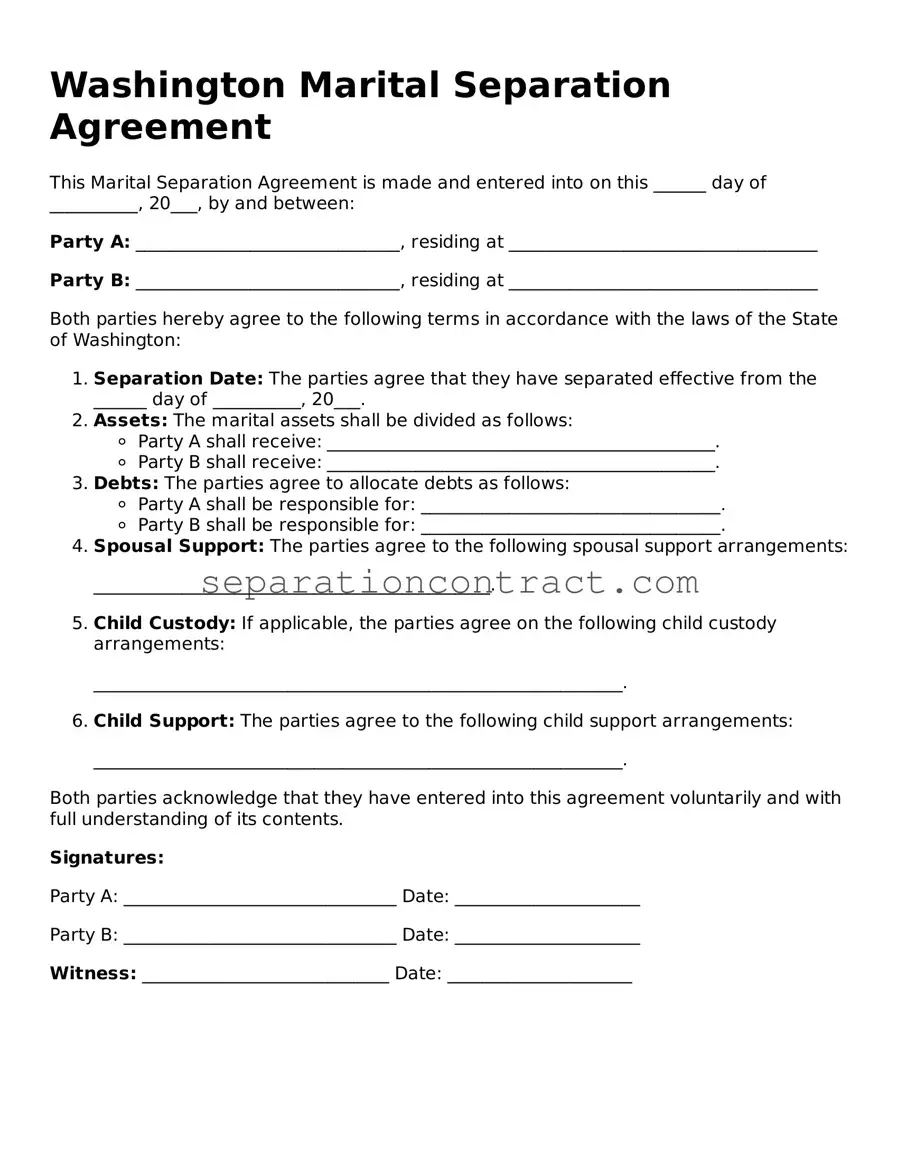Filling out the Washington Marital Separation Agreement form can be a daunting task. Many people make mistakes that can lead to complications down the line. One common error is failing to provide complete and accurate information. This might seem minor, but leaving out important details can lead to misunderstandings between parties.
Another frequent mistake is not being clear about the terms of separation. Vague language can create confusion. It’s essential to be specific about asset division, child custody arrangements, and any spousal support. Clear terms help prevent disputes later on.
Some individuals overlook the importance of including all relevant assets and debts. Omitting items can result in one party feeling cheated or unappreciated. Both parties should take the time to compile a comprehensive list of everything that needs to be addressed.
Additionally, people sometimes forget to date the agreement. A date is crucial for establishing when the terms were agreed upon. Without it, there could be disputes about when certain responsibilities began or ended.
Another mistake is not having the document reviewed by a legal professional. While it might seem like an unnecessary expense, a lawyer can catch errors and provide valuable advice. This step can save significant time and money in the future.
Many also neglect to sign the agreement in front of a notary public. A notarized signature adds an extra layer of authenticity and can be crucial if the agreement is ever challenged. Not taking this step could weaken the document’s enforceability.
Sometimes, individuals make the mistake of assuming that verbal agreements are sufficient. It’s important to remember that any agreements made verbally should be documented. Relying solely on memory can lead to misunderstandings.
People often fail to consider the tax implications of their separation agreement. Not all asset transfers are tax-free, and overlooking this can have financial repercussions. Consulting with a tax professional can help clarify these issues.
Finally, one of the biggest mistakes is not keeping copies of the signed agreement. Once the form is complete, it’s essential to store it in a safe place and share copies with all involved parties. This ensures that everyone is on the same page and can refer back to the agreement as needed.
